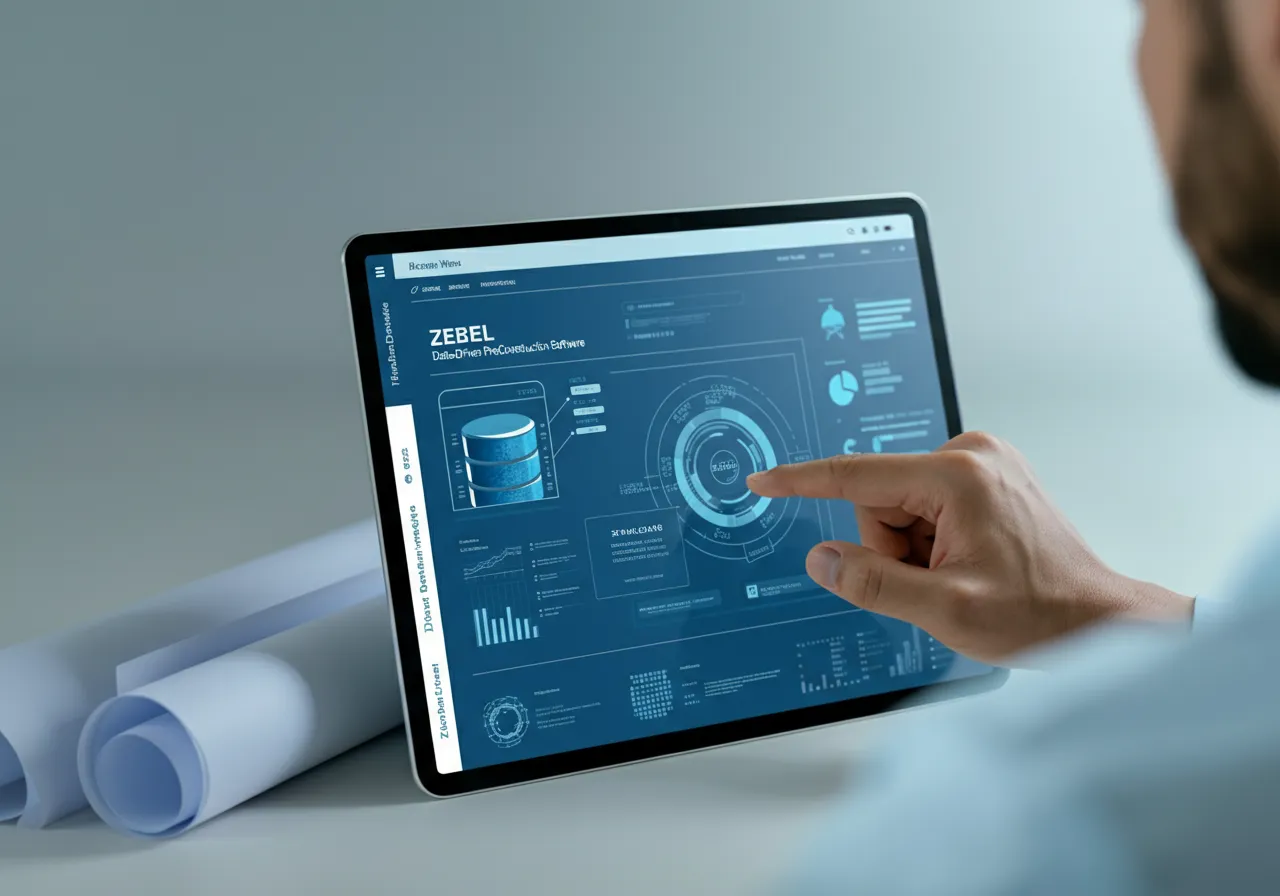Preconstruction acts as the bridge between initial planning and the physical activities on-site, transforming an abstract vision into actionable plans. It plays a vital role in balancing costs, addressing potential risks, and setting a clear path toward project success.
What Does Preconstruction Mean?
Preconstruction refers to the strategic phase before actual construction begins. Its purpose is to refine initial project ideas into practical, executable plans while aligning them with clearly defined budgets and schedules.
During this early phase, general contractors, owners, architects, engineers, and subcontractors collaborate to identify potential issues, improve designs, and establish project goals.
Key activities during this stage include design development, contractor selection, risk analysis, project scheduling, and cost estimation.
Why is Preconstruction Important?
Preconstruction sets the foundation for a successful construction project by addressing potential issues before a single shovel hits the ground. Here’s why preconstruction is so significant:
- Prevents Budget Overruns: By developing accurate estimates and identifying potential risks early, the preconstruction phase helps keep costs under control and avoid overruns.
- Improves Communication: Key stakeholders align on objectives, scope of work, and timelines, ensuring everyone is on the same page.
- Mitigates Risks: Proper planning helps identify and resolve challenges like design flaws or zoning issues before they escalate.
- Maximizes Efficiency: A solid preconstruction process streamlines the construction schedule and minimizes delays.
A well-executed preconstruction process dramatically improves the odds of completing your project on time and within budget.
Key Players in Preconstruction
A well-rounded preconstruction team includes diverse professionals who bring specialized expertise to the table. Here’s a breakdown of the critical team members and their responsibilities:
Role | Responsibilities |
Owner/Project Developers | Define project objectives and budget limitations while steering fundamental decisions. |
Construction Managers (CM) | Act as key coordinators, ensuring that the project stays on time and within budget while meeting all quality standards. |
Architects | Create the overall design and blueprint of the project, ensuring it is both functional and aesthetically pleasing. |
Civil Engineers | Focus on the planning, design, and management of infrastructure components like roads, bridges, and utilities. |
Structural Engineers | Specialize in analyzing and designing the framework of buildings or structures, guaranteeing they can withstand various stresses and environmental factors. |
MEP Engineers | Handle the integration and functionality of mechanical systems, electrical systems, and plumbing networks. |
General Contractors (GC) | Oversee the day-to-day operations of a construction project, including scheduling, resource management, and maintaining safety protocols on-site. |
Subcontractors and Suppliers | Provide insights into feasibility, materials, and logistics. |
Specialty Contractors | Focus on specific areas of construction, such as HVAC, roofing, or fire protection. |
What is the Role of a Preconstruction Manager?
A preconstruction manager is a key professional who oversees the planning and preparation stages of a construction project to ensure its success. Their role is critical in setting the foundation for efficient execution. Responsibilities include:
- Developing comprehensive project plans, timelines, and budgets.
- Evaluating the feasibility of the project, including cost analysis and risk management.
- Collaborating with architects, engineers, and contractors to align on project objectives.
- Providing accurate cost estimates and suggesting cost-saving strategies where possible.
- Identifying necessary materials and subcontractors, ensuring timely procurement.
- Ensuring all required permits and regulatory requirements are met.
- Maintaining clear communication with clients to manage expectations and address concerns.
Key Steps in the Preconstruction Planning
The preconstruction process involves careful planning, analysis, and collaboration to ensure every aspect of the project is thoroughly assessed before construction begins. Here’s an overview of the key steps in the preconstruction phase.
1. Project Feasibility and Concept Development
During this step, the project team assesses the feasibility of the idea, considering factors such as location, budget, timeline, and regulatory requirements. A conceptual plan is developed to align with the client’s vision.
- Key Challenge: Accurately predicting project constraints and aligning the client’s expectations with financial and technical realities can be difficult, particularly when unforeseen factors come into play.
2. Design Development and Planning
This step involves the creation of initial design documents and specifications. The design team, consisting of architects, engineers, and consultants work closely to produce plans that meet functional, aesthetic, and regulatory standards.
Architectural Design
Architectural design focuses on translating the client’s vision into tangible design concepts. This involves developing detailed drawings, layouts, and 3D models that outline the structure’s form, function, and aesthetic elements.
Architects ensure that the design aligns with zoning laws, building codes, and environmental considerations while addressing the project’s practical requirements.
Engineering Design
Engineering design centers around creating a detailed plan that ensures the structural integrity, functionality, and safety of the project. This step involves disciplines such as structural, mechanical, electrical, and civil engineering, each contributing essential elements to the overall design.
Engineers analyze materials, perform load calculations, and design systems to meet the project’s technical and regulatory demands.
Interior Design
Interior designers curate functional and visually appealing interior spaces that complement the architectural framework. Designers work closely with clients to understand their preferences, lifestyle, and practical needs, ensuring the proposed interior elements align with the overall vision of the project.
This stage includes selecting materials, finishes, color schemes, furniture layouts, and lighting designs, all of which contribute to creating cohesive and harmonious interiors.
- Key Challenge: Coordinating among multiple stakeholders while managing scope changes can lead to delays or conflicts in design priorities, especially if communication is unclear.
3. Contractor Selection
After finalizing the project’s design, the project owner will begin the process of selecting a qualified general contractor to bring the design to life. This phase typically involves issuing a Request for Proposal (RFP) or soliciting bids from contractors with relevant experience.
The project owner will evaluate potential contractors based on their expertise, reputation, and ability to meet the project’s budget and timeline. It is crucial to thoroughly review the contractors’ credentials, portfolios, and references to ensure alignment with the project’s vision and standards.
Issuing and Responding to RFQs or RFPs
When issuing an RFQ (Request for Qualifications) or RFP (Request for Proposal), the project owner clearly outlines the project scope, timeline, budget, and specific requirements. This allows potential contractors to understand the expectations and tailor their responses accordingly.
Responding to RFQs or RFPs involves preparing detailed submissions that showcase the contractor’s qualifications, experience, proposed approach, and cost estimates.
Bid Preparation
Once an accurate estimate is developed, contractors can calculate their potential profit margins and determine a competitive yet sustainable bid price. The information gathered during the cost estimation process, such as material costs, labor rates, and project timelines, is directly applied to crafting a bid proposal.
This ensures that the bid reflects both the client’s expectations and the contractor’s ability to deliver the project efficiently and effectively. A well-informed bid increases the likelihood of winning the project and minimizes the risk of unexpected financial setbacks during execution.
Bid Evaluation and Leveling
Bid evaluation and bid leveling are critical steps for owners in selecting the most suitable contractor for a project. It involves thoroughly analyzing the received bids to ensure all proposals are comparable and meet the project’s requirements. During evaluation, factors such as pricing, scope of work, qualifications, timelines, and compliance with specifications are carefully reviewed.
Leveling, on the other hand, is the process of normalizing the bids to create a fair comparison. Adjustments are made to account for differences in scope or methodology so that each bid reflects an equivalent basis for assessment. This ensures that decisions are based on accurate and consistent data rather than superficial cost differences.
Contract Negotiation
Contract negotiation is the final step in contractor selection, where the parties discuss and agree upon terms and conditions to ensure mutual satisfaction. This process involves clarifying responsibilities, pricing, deliverables, timelines, and legal obligations to solidify the agreement.
4. Site Analysis and Preparation
During this step, experts meticulously assess the site to ensure it suits the intended development.
Key activities include topographical surveys to measure land elevations and contours, geotechnical testing to evaluate soil stability, and environmental assessments to identify potential hazards or regulatory concerns.
Responsibilities during site analysis are divided among several stakeholders. Engineers are tasked with analyzing soil samples and determining load-bearing capacities, while environmental consultants review the site for ecological impacts or contamination risks.
Architects assess the land’s characteristics to optimize design and functionality, ensuring alignment with the project’s requirements and local zoning laws. Project managers coordinate these efforts to maintain timelines and align findings with the overall project plan.
- Key Challenge: Unexpected site conditions, such as contaminated soil or unanticipated environmental regulations, can introduce delays and additional costs.
5. Budgeting and Cost Estimation
Developing a detailed cost estimate is critical to maintaining the financial viability of the project. This step includes material sourcing, labor projections, and risk assessments for potential cost changes.
Procurement specialists must source competitive pricing for materials while maintaining quality standards. Financial analysts may also be involved in assessing the overall financial health of the project and providing insights into cost-saving strategies.
- Key Challenge: Fluctuations in material prices or labor rates, along with incomplete scope definitions, can result in inaccuracies in cost estimation.
6. Project Scheduling and Resource Allocation
During this step, the General Contractor (GC) develops a comprehensive project schedule.
This often begins with the creation of a Work Breakdown Structure (WBS), which divides the project into manageable sections or tasks. The WBS helps identify major deliverables and ensures that every aspect of the project is accounted for.
Once the WBS is established, the GC selects appropriate scheduling methodologies.
Scheduling Methodologies
Techniques such as Critical Path Method (CPM) or Program Evaluation and Review Technique (PERT) may be utilized to map out the sequence of tasks, identify dependencies, and outline the critical path to project completion. These methodologies ensure that the project timeline accommodates both standard workflow and potential delays.
Resource Allocation
Resource allocation is another key element during this stage. The GC determines the labor, materials, equipment, and other resources required for each task within the schedule. This process involves ensuring resource availability while optimizing usage to reduce waste and prevent bottlenecks. Contingency plans are also incorporated to address potential issues such as shortages or unexpected changes in resource requirements.
- Key Challenge: Misjudging timeframes or resource availability can lead to delays, cost overruns, or logistical challenges if demand outpaces supply.
7. Permitting and Regulatory Approvals
Obtaining necessary permits and ensuring compliance with local, state, and federal regulations are integral to the preconstruction phase. This step secures the legal foundation to begin construction.
Pre-Application Meetings
Pre-application meetings are often the first step in the permitting process. These meetings provide an opportunity for project stakeholders to engage with regulatory authorities, discuss the project scope, and identify potential obstacles early on.
During this stage, guidelines for compliance, documentation requirements, and project-specific considerations are typically outlined, helping create a roadmap for the application process.
Preparation and Submission
The preparation and submission phase involves gathering all required documentation and completing application forms as specified by the relevant regulatory bodies. This may include architectural drawings, environmental impact assessments, and proof of zoning compliance.
Plan Review
Once the application is submitted, it undergoes a review process conducted by permitting authorities. During the plan review, officials assess whether the proposed project complies with applicable building codes, zoning laws, safety standards, and environmental regulations. This stage may involve back-and-forth communications for clarifications or revisions to the plans to ensure full compliance.
Permit Issuance
After completing the plan review and addressing any required modifications, the final step involves receiving the official permits. Permit issuance signifies that the project has met all regulatory standards, allowing construction to proceed legally. It is important to maintain copies of all permits on-site throughout the construction phase to ensure transparency and adherence to compliance requirements.
- Key Challenge: Delays in obtaining permits or navigating complex regulatory environments can hold up the project start, potentially causing schedule disruptions.
8. Risk Assessment and Mitigation Planning
Identifying potential risks and developing mitigation strategies are necessary to minimize construction disruptions.
The process begins by identifying risks across different categories, including external factors such as economic conditions and environmental concerns, as well as internal factors like resource allocation, project design issues, or procedural inefficiencies.
Once identified, each risk is evaluated based on its likelihood and potential impact to prioritize intervention efforts. Techniques such as risk modeling, scenario planning, and contingency allowances are valuable tools to prepare for uncertainties and safeguard the project timeline and budget.
Mitigation planning focuses on devising actionable strategies to address these risks. This could include diversifying suppliers to reduce dependency risks, employing advanced forecasting tools to anticipate weather disruptions, securing insurance for unforeseen events, or creating detailed contingency plans for financial volatility.
- Key Challenge: Accurately predicting all potential risks is inherently difficult, and overlooked risks can have substantial consequences on both time and budget.
9. Value Engineering
This involves analyzing the cost-effectiveness of various design elements to ensure the best use of resources without compromising quality or functionality.
Designers and engineers are tasked with thoroughly reviewing each element of the design to identify redundancies or areas for improvement. Project managers ensure that proposed changes align with the overall project scope and objectives, while also managing timelines and budgets.
- Key Challenge: Balancing cost savings with design integrity and client satisfaction can be challenging, especially when differing priorities arise among stakeholders.
10. Material Takeoff
The Material Takeoff (MTO) involves accurately estimating the quantity and cost of all material required for a project. This process helps to determine the overall costs of a project, identify potential cost-saving opportunities, and ensure that all materials are available when needed.
The MTO typically includes:
- Quantity takeoff: This involves identifying the number of each type of material required for the project based on construction drawings and specifications.
- Material pricing: Once the quantity takeoff is complete, prices for each material are obtained from suppliers or through market research.
- Material costing: The final step is to multiply the quantities with their respective prices to arrive at an accurate estimate of material costs for the project.
Key challenges: Errors can lead to underestimations or overestimations of materials. Additionally, fluctuating market prices for materials can complicate cost predictions and require constant updates.
11. Preconstruction Meeting
A preconstruction meeting brings together all stakeholders involved in the project to discuss important details and logistics before work begins. This meeting typically takes place after the design phase is complete and before any physical work on the site begins.
During this meeting, the project team, including the client, contractor, subcontractors, architects, engineers, and other relevant parties, will review project plans and specifications. They will also discuss timelines, budget expectations, safety protocols, site access and logistics, material delivery schedules, and any other pertinent details.
The purpose of this meeting is to ensure that everyone involved in the project understands their roles and responsibilities and has a clear understanding of the project.
12. Construction Mobilization
Construction mobilization marks the transition from project planning to physical execution. This step involves preparing the construction site and ensuring all necessary resources are in place to begin work efficiently.
Key activities during mobilization include site setup, equipment delivery, utility connections, and the establishment of temporary facilities like storage areas and office spaces.
Additionally, construction teams are informed about safety protocols, project timelines, and designated responsibilities during this phase.
The Benefits of a Well-Executed Preconstruction Process
Why is preconstruction such a vital step in construction management? Here’s how it drives better project outcomes.
1. Risk Reduction
Addressing issues early ensures fewer surprises during construction. Proper preconstruction planning is key to mitigating potential risks that could derail the project.
2. Budget and Cost Savings
By creating thorough cost estimates and identifying potential overruns, preconstruction prevents wasteful spending. It maximizes resource allocation and ensures projects remain financially viable.
3. Improved Project Outcomes
Comprehensive planning leads to smoother construction execution. Streamlined workflows and enhanced collaboration lay the groundwork for projects to finish on time and within scope.
4. Enhanced Communication and Collaboration
Clear communication across all stakeholders creates a shared understanding of project goals, ensuring everyone works towards the same objectives. Regular updates, meetings, and preconstruction checklists foster transparency.
Preconstruction Checklist
Preconstruction is a complex phase requiring coordination, risk assessment, and precise planning to align budgets, timelines, and resources.
We’ve pulled together the key points and deliverables from the preconstruction phase, planned collaboratively by each part of the preconstruction team.
- Review the design plan
- Estimate costs and identify potential savings
- Manage project scope effectively
- Identify risks and propose solutions
- Explore value engineering opportunities
- Select and assess site feasibility
- Evaluate soil conditions
- Prepare a detailed bill of quantities
- Verify available utilities
- Conduct life-cycle analysis
- Prepare contingencies for client and contractor
- Obtain necessary permits
- Schedule and conduct inspections
Prepare for Project Success with Zebel
Preconstruction is a pivotal factor in ensuring construction projects succeed. A thorough process lays the groundwork for better planning, accurate budgeting, improved collaboration, and mitigated risks. Whether it’s ensuring smooth communication between stakeholders or refining project designs, preconstruction brings your vision to life, one plan at a time.
Zebel’s estimating software enhances this process, enabling construction teams to build smarter, faster, and more efficiently.
Book a demo with Zebel and see how data-driven insights can redefine your approach to construction planning.
Frequently Asked Questions
What is the difference between construction and pre-construction?
Pre-construction refers to the initial planning, design, and preparation phase of a project, focusing on budgeting, scheduling, and logistics before any physical work begins. Construction, on the other hand, is the execution phase where the plans from pre-construction are carried out to build the structure.
How long does pre-construction take?
The duration of pre-construction varies depending on the complexity and scale of the project but typically takes several weeks to a few months, and even possibly more than a year for larger projects. This phase ensures all necessary details are addressed before construction begins.
What is the difference between estimating and preconstruction?
Estimating is the process of forecasting the costs of a project, including materials, labor, and other expenses, while pre-construction encompasses a broader range of activities, such as planning, design, permitting, and scheduling, to prepare for the actual construction phase. Estimating is a component of the pre-construction phase.







